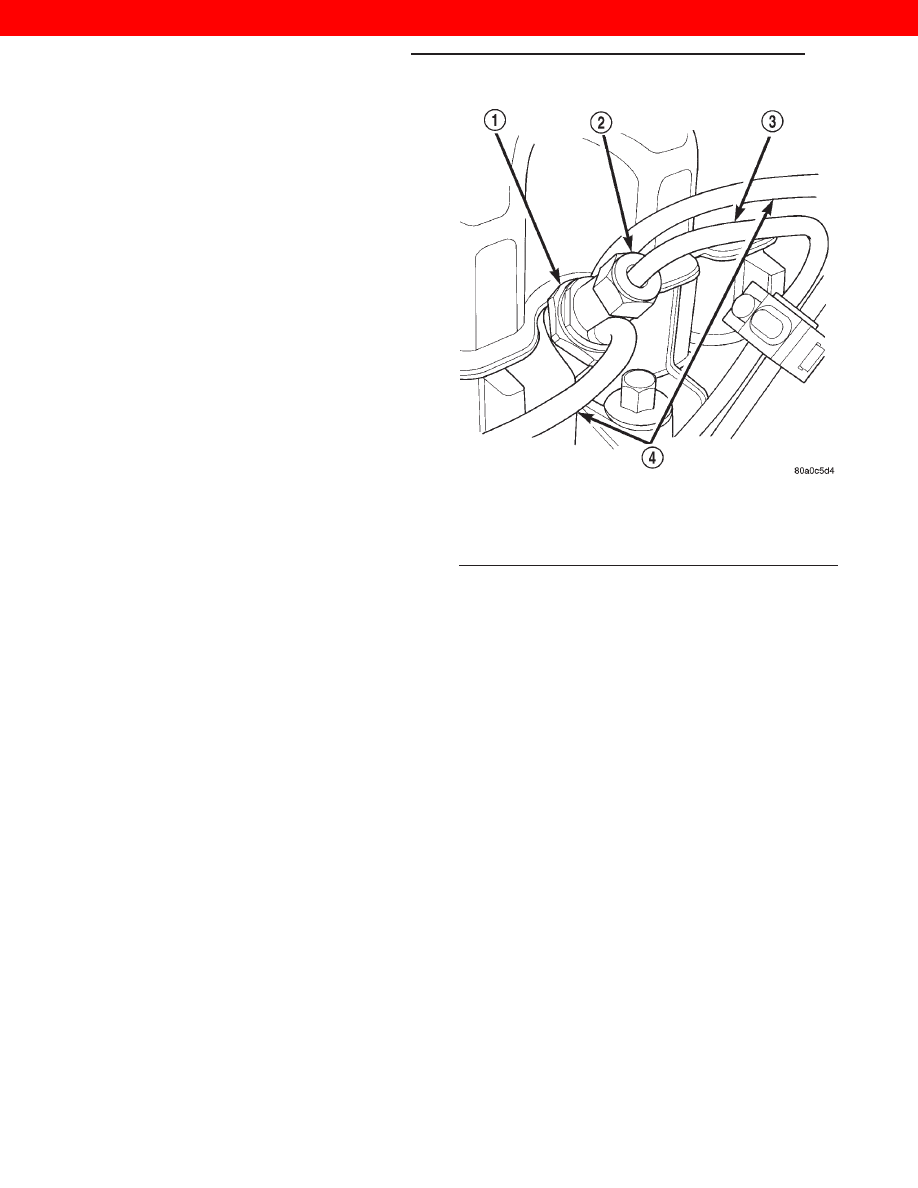Jeep XJ. Manual - part 353

(3) Wipe seal area of tank clean and place a new
o-ring seal in position on pump.
(4) Position fuel reservoir module in tank with locknut.
(5) Tighten locknut to 75 N·m (55 ft. lbs.).
(6) Connect fuel lines.
(7) Plug in electrical connector. Slide connector
lock into position.
(8) Raise fuel tank, install bolts into fuel tank
straps and tighten.
(9) Lower vehicle on hoist.
(10) Connect negative cable from battery.
(11) Fill fuel tank. Check for leaks.
(12) Install fuel filler cap.
HIGH-PRESSURE LINES
All high–pressure fuel lines are of the same length and
inside diameter. Correct high–pressure fuel line usage
and installation is critical to smooth engine operation.
CAUTION: The high–pressure fuel lines must be
clamped securely in place in the holders. The lines
cannot contact each other or other components. Do
not attempt to weld high–pressure fuel lines or to
repair lines that are damaged. Only use the recom-
mended lines when replacement of high–pressure
fuel line is necessary.
REMOVAL
(1) Disconnect negative battery cable from battery.
(2) Remove the necessary clamps holding the lines
to the engine.
(3) Clean the area around each fuel line connec-
tion. Disconnect each line at the top of each fuel
injector (Fig. 45).
(4) Disconnect each high–pressure line fitting at
each fuel injection pump delivery valve.
(5) Very carefully remove each line from the engine.
Note the position (firing order) of each line while remov-
ing. Do not bend the line while removing.
CAUTION: Be sure that the high–pressure fuel lines
are installed in the same order that they were
removed. Prevent the injection pump delivery valve
holders from turning when removing or installing
high–pressure lines from injection pump.
INSTALLATION
(1) Carefully position each high–pressure fuel line
to the fuel injector and fuel injection pump delivery
valve holder in the correct firing order. Also position
each line in the correct line holder.
(2) Loosely install the line clamp/holder bolts.
(3) Tighten each line at the delivery valve to 19
N·m (168 in. lbs.) torque.
(4) Tighten each line at the fuel injector to 19 N·m
(168 in. lbs.) torque.
Be sure the lines are not contacting each
other or any other component.
(5) Bleed air from the fuel system. Refer to the Air
Bleed Procedure section of this group.
SPECIFICATIONS
FUEL TANK CAPACITY
75 Liters (20.0 Gals.)
Nominal refill capacities are shown. A variation
may be observed from vehicle to vehicle due to man-
ufacturing tolerances, ambient temperatures and
refill procedures.
IDLE SPEED
750 RPM
625 RPM with engine at normal oper-
ating temperature.
FUEL INJECTOR FIRING SEQUENCE
1–3–4–2
FUEL SYSTEM PRESSURE
Peak Injection Pressure/Fuel Injection Pump
Operating Pressure: 40,000–45,000 kPa (5801–
6526 psi).
Opening
Pressure
of
Fuel
Injector:
16,500–
17,300 kPa (2393–2509 psi).
Fig. 45 Fuel Lines at Fuel Injectors
1 – FUEL INJECTOR
2 – LINE FITTING
3 – HIGH-PRESSURE FUEL LINE
4 – FUEL DRAIN TUBES
14 - 22
FUEL SYSTEM—2.5L DIESEL ENGINE
XJ
REMOVAL AND INSTALLATION (Continued)
2000 JEEP CHEROKEE